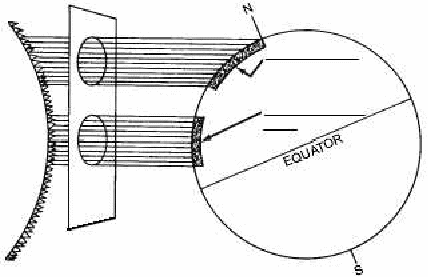The average power per unit area perpendicular to the Sun that arrives at the Earth from the Sun is called the solar constant. This is shown below. Away from that part of the Earth directly facing the Sun, the intensity of solar radiation at the Earth's surface will decrease because it will be spread over a greater area. Because the orientation of the Earth varies with the seasons, with a part of the Earth experiencing summer more directly facing the Sun that during the winter, the intensity of solar radiation reaching any part of the Earth's surface will also vary with the seasons.

It is important to note that the solar constant is not constant. The power output of the Sun is not constant, varying with the solar cycle. Also, the solar constant is not the power that arrives at the Earth's surface. Much of the energy is reflected back into space by clouds, and much else is reflected or refracted away from the Earth's surface. This is true especially as the poles are neared, since the Sun's radiation will have to pass through more of the Earth's atmosphere. Less than half – only 45% - of the incident solar energy actually reaches the Earth's surface. The main energy losses are shown below.
Troposphere absorbs 24%
Clouds reflect 23%
Earth's surface reflects 4%
Clouds absorb 3%
Stratosphere absorbs 1%